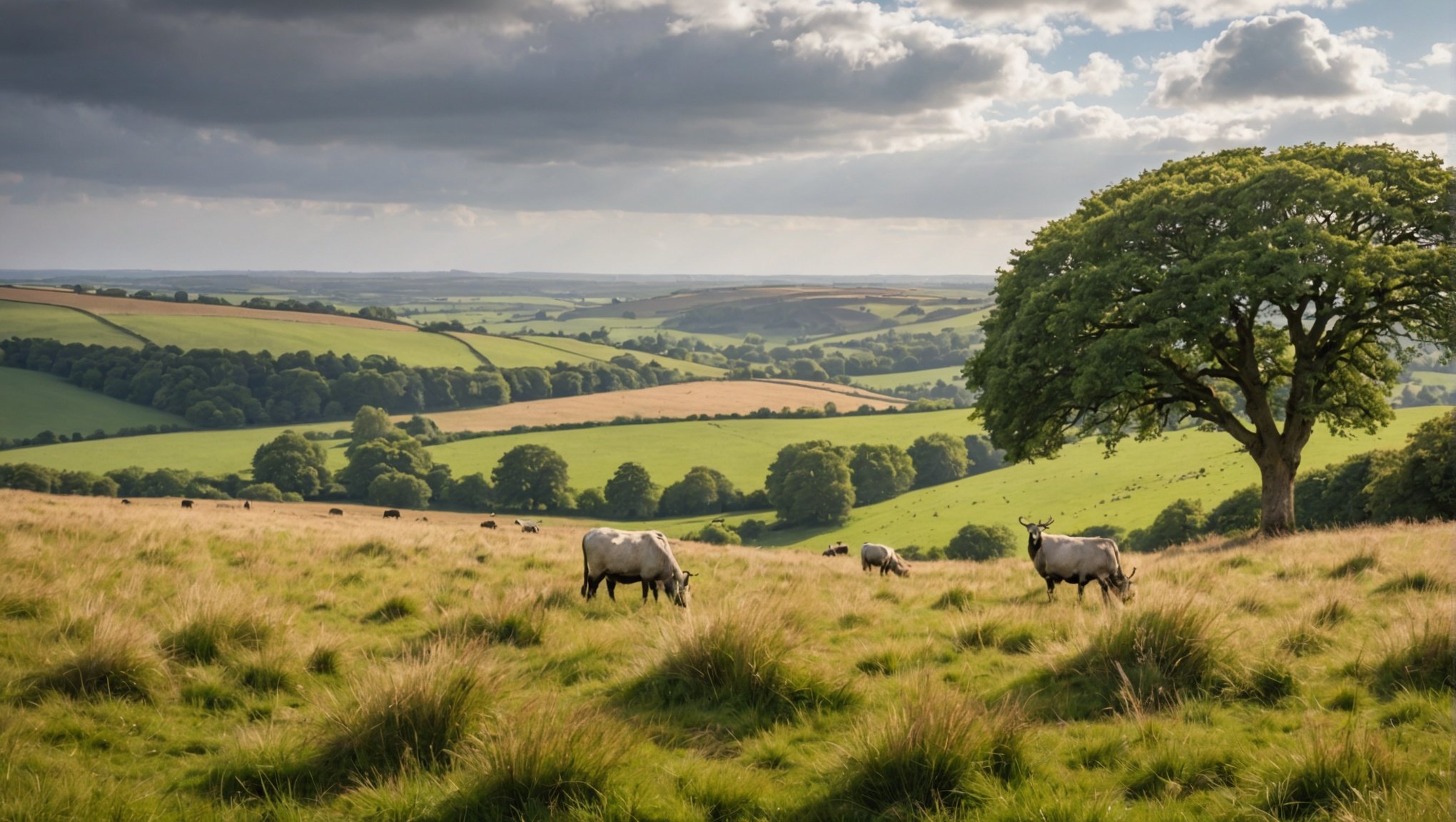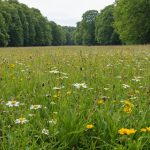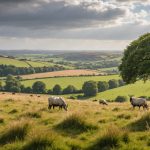UK landowners play a vital role in restoring habitats for endangered species. This guide provides practical steps to empower landowners, demonstrating how their efforts can positively impact local ecosystems. Learn about restoration techniques, funding options, and community involvement opportunities. By engaging in these initiatives, you can contribute to biodiversity and create a thriving environment for wildlife. Join us in this vital endeavor to protect and restore natural habitats across the UK.
Understanding Habitat Restoration
Habitat restoration plays a crucial role in maintaining ecological balance by reviving natural environments that have been degraded or destroyed. This process is significant as it not only restores the physical landscape but also rejuvenates the complex interactions within ecosystems. Natural habitats are essential for supporting biodiversity, providing shelter, food, and breeding grounds for countless species. When these habitats are compromised, the delicate balance of ecosystems is disrupted, leading to a decline in biodiversity.
A lire également : 5 Essential Tips for UK Homes to Prevent Hedgehog Injuries During Bonfire Night Festivities
The ecological importance of habitat restoration extends to addressing the needs of endangered species. These species often rely on specific habitats for survival, and their loss can lead to extinction. By restoring these environments, we create opportunities for endangered species to recover and thrive. This involves re-establishing native plants, removing invasive species, and reinstating natural processes like water flow and fire regimes.
In summary, habitat restoration is not only about preserving the beauty of nature but also about ensuring the survival of species that are crucial to the planet’s ecological health. By focusing on the needs of endangered species, we contribute to a more biodiverse and resilient world.
En parallèle : Top Tips for Keeping Your Active Vizsla Hydrated During Summer Adventures
Practical Steps for Landowners
For landowners, taking action in habitat management can significantly contribute to ecological restoration. The first step is to assess the land for its restoration potential. This involves evaluating the current state of the land, identifying degraded areas, and understanding the specific needs of the local ecosystem.
Once assessment is complete, landowners can implement native planting. Introducing indigenous plant species is crucial, as these plants are adapted to the local climate and soil conditions. They provide essential resources for native wildlife, aiding in the re-establishment of natural food chains and habitats.
Invasive species management is another critical component. Removing non-native species helps prevent them from outcompeting native flora and fauna, allowing the ecosystem to regain its natural balance.
Creating wildlife corridors and shelters is also beneficial. These corridors connect fragmented habitats, enabling animals to move safely between areas for foraging, breeding, and shelter. By providing these pathways and safe havens, landowners can support the survival and movement of various species, enhancing biodiversity.
Through these restoration techniques, landowners can play a pivotal role in reviving natural habitats and promoting ecological health.
Best Practices in Habitat Restoration
Implementing best practices is essential for achieving habitat success. Effective strategies begin with a comprehensive understanding of the ecosystem’s needs. Techniques such as native planting and invasive species management are foundational. These approaches help re-establish natural processes and support biodiversity.
Monitoring and evaluating restoration efforts are crucial for ensuring long-term success. Regular assessments allow for adjustments to be made, ensuring that the restoration aligns with ecological goals. This process involves tracking the recovery of native species and the effectiveness of management strategies.
Collaboration with conservation experts and organizations enhances restoration projects. These partnerships provide access to valuable resources and expertise. Experts can offer guidance on the latest techniques and innovations in habitat restoration. Organizations often support through funding, research, and volunteer efforts, amplifying the impact of restoration activities.
To achieve effective habitat restoration, consider these key strategies:
- Engage with local conservation groups for resources and support.
- Regularly monitor progress and adapt strategies as needed.
- Prioritize native species and manage invasive threats.
By following these effective strategies, landowners and conservationists can work together to ensure successful habitat restoration and ecological balance.
Case Studies of Successful Restoration
Exploring case studies offers valuable insights into the practical application of habitat restoration techniques. Success stories from landowner-led projects highlight the transformative impact of effective restoration efforts. These projects often start with a comprehensive understanding of the local ecosystem, followed by the implementation of strategies tailored to the specific needs of the area.
One notable example involves a landowner who successfully restored a degraded wetland by prioritising native planting and removing invasive species. The result was a thriving habitat that supported a diverse range of wildlife, demonstrating the power of targeted restoration efforts.
Lessons learned from such case studies emphasise the importance of ongoing monitoring and adaptability. Successful projects often involve regular assessment and adjustment of strategies to ensure alignment with ecological goals. This approach not only enhances the effectiveness of restoration but also fosters resilience in restored habitats.
The impact of restored habitats on local ecosystems is profound. Revitalised areas contribute to increased biodiversity, improved water quality, and enhanced resilience against environmental changes. These case studies serve as a testament to the potential of restoration projects to create sustainable and vibrant ecosystems.
Relevant Legislation and Policies
In the UK, legislation and conservation policies play a critical role in supporting habitat restoration efforts. A key piece of environmental law is the Wildlife and Countryside Act 1981, which provides legal protection to endangered species and their habitats. This act is complemented by the Countryside and Rights of Way Act 2000, enhancing public access to nature while promoting conservation.
Government and NGOs collaborate extensively to advance conservation efforts. The UK government, through DEFRA (Department for Environment, Food & Rural Affairs), implements policies that promote sustainable land management and biodiversity. NGOs such as the Wildlife Trusts and the RSPB (Royal Society for the Protection of Birds) offer expertise and resources, working alongside governmental bodies to achieve conservation goals.
Funding opportunities are often linked to these legislative frameworks. For instance, the Environmental Land Management scheme provides financial incentives to landowners who adopt practices beneficial to the environment. Additionally, grants from organisations like Natural England support projects that align with national conservation priorities. These legislative and financial structures offer a robust framework for advancing habitat restoration across the UK.
Funding Opportunities for Landowners
Navigating the landscape of funding sources and grants is crucial for landowners aiming to embark on habitat restoration projects. Numerous avenues provide financial support, enabling the implementation of effective restoration strategies.
To access these resources, landowners should first explore government-backed schemes, such as the Environmental Land Management scheme, which offers incentives for sustainable practices. Additionally, organisations like Natural England and the Wildlife Trusts frequently provide grants tailored to specific conservation goals.
Applying for funding involves a structured process. Landowners must demonstrate the ecological value of their projects and align them with funding criteria. This typically requires a detailed proposal outlining the project’s objectives, expected outcomes, and long-term benefits for biodiversity and ecosystem health.
Examples of successful funded projects include wetland restoration initiatives that have significantly enhanced local biodiversity and improved water quality. These projects not only revitalise ecosystems but also offer valuable insights into the transformative power of targeted restoration efforts.
In summary, by tapping into available financial support, landowners can effectively contribute to ecological restoration, ensuring the sustainability and resilience of natural habitats.
Community Involvement in Restoration Efforts
Engaging local communities in habitat restoration is crucial for long-term success. Community engagement fosters a sense of ownership and responsibility towards the environment, encouraging sustained conservation efforts. Involving residents in collaborative projects not only enhances ecological outcomes but also strengthens community ties.
One effective way to boost community engagement is through volunteer programs. These initiatives provide hands-on opportunities for individuals to contribute to restoration activities, such as planting native species or removing invasive plants. By participating, volunteers gain a deeper understanding of ecological challenges and the importance of biodiversity.
Collaborative projects between local authorities, NGOs, and community groups can amplify the impact of restoration efforts. These partnerships bring together diverse resources and expertise, facilitating large-scale projects that might be challenging for individual organisations to tackle alone. Successful examples include community-led wetland restoration and urban green space initiatives that have transformed degraded areas into thriving ecosystems.
To engage communities effectively, it is vital to communicate the importance of their support in achieving ecological goals. Educational workshops, public events, and social media campaigns can raise awareness and inspire action, ensuring that community involvement remains a cornerstone of habitat restoration efforts.
Resources for Landowners
Access to the right resources is essential for landowners involved in habitat restoration. Below are some key organisations and conservation networks that provide invaluable support:
- Wildlife Trusts: Offer guidance and resources tailored to local ecosystems.
- Natural England: Provides tools and advice on sustainable land management.
- RSPB (Royal Society for the Protection of Birds): Focuses on bird habitat conservation and offers expert advice.
In addition to organisational support, there are numerous recommended reading materials and online resources available. Books like “Bringing Nature Home” by Douglas Tallamy provide insights into the importance of native plants in restoration. Online platforms such as the UK Government’s environmental portal offer access to comprehensive guides and updates on conservation policies.
Utilising advanced tools and technologies can significantly enhance restoration efforts. Geographic Information Systems (GIS) help in mapping and monitoring land changes, while drones offer aerial views for better planning and assessment. These tools allow for precise and efficient management of restoration projects, ensuring that landowners can achieve their ecological goals effectively.
















